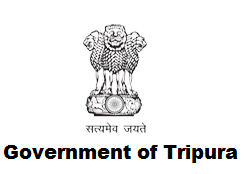Members in Assembly 60 Chief minister Manik Sarkar | Governor Tathagata Roy | |
 | ||
Speaker Ramendra Chandra Debnath Assembly | ||
The Government of Tripura also known as the State Government of Tripura, or locally as State Government, is the supreme governing authority of the Indian state of Tripura and its 8 districts. It consists of an executive, led by the Governor of Tripura, a judiciary and a legislative branch.
Contents
Like other states in India, the head of state of Tripura is the Governor, appointed by the President of India on the advice of the Central government. His or her post is largely ceremonial. The Chief Minister is the head of government and is vested with most of the executive powers. Agartala is the capital of Tripura, and houses the Vidhan Sabha (Legislative Assembly) and the secretariat. The Guwahati High Court, located in Guwahati, Assam has an Agartala Bench that exercises the jurisdiction and powers in respect of cases arising in the State of Tripura.
The present Legislative Assembly of Tripura is unicameral, consisting of 60 Member of the Legislative Assembly (M.L.A). Its term is 5 years, unless sooner dissolved.
History
Tripura is located in the south-west extreme corner of the north-eastern region, between latitudes 22*57' and 24*33' N and longitudes 91*10' and 92*20' E. The state is situated between the river valley Myanmar and Bangladesh, and is bounded by Bangladesh on the north, west, south and southeast; in the east it has a common boundary with Assam and Mizoram. Tripura is a land locked state and its geographical limits touch both national and inter national boundaries. Its length of international boundary line with Bangladesh measures 839 km. Its national boundaries with Assam and Mizoram measure 53 km and 109 km respectively. The partition of India in 1947 and political upheavals that had preceded and followed the momentous development had brought an end to princely rule of Manikya dynasty in Tripura. After India became independent, Tripura acceded to the Indian Union on 15 October 1949 as a "C" category state and became a Union Territory in November 1956. A popularly elected ministry was formed in Tripura in July 1963 and since then, the State has had governments elected on the basis of universal adult franchise. Tripura attained full statehood on 21 January 1972. Tripura is also rich in its composite cultural heritage embodied in archaeological remains, architecture and sculpture.
Tripura at a glance
Tripura is a state in North-East India which borders Bangladesh, Mizoram and Assam. It is surrounded by Bangladesh on its north, south and west: the length of its international border is 856 km (84 per cent of its total border). It shares a 53 km long border with Assam and a 109 km long border with Mizoram. The state is connected with the rest of India by only one road (NH-44) that runs through the hills to the border of Karimganj District in Assam and then winds through the states of Meghalaya, Assam and North Bengal to Calcutta. At the time of Tripura's merger with effect from 15 October 1949 with the Indian Union, the major mode of farming was shifting cultivation or 'jhum', which produced little surplus. A small proportion of the plain lands of the State were under settled agriculture undertaken by Bengalis, and the main crop was rice. Most of the plain lands of the State were not under cultivation and were covered with cane-brakes and marshes. Thus at the time of formation of the State, the economy was predominantly agricultural and forest-based, with no industrial base, a low level of urbanization and limited infrastructure. For administrative convenience and decentralisation of power Tripura which had once been a single district only is now divided into altogether eight districts, twenty three subdivisions and fifty eight rural development blocks. Besides, a special feature of the state is the vibrant existence of an Autonomous District Council (ADC) for tribals based on 6th schedule of the Indian constitution. The ADC in Tripura encompasses 68.10% of the state's total geographical territory and is home to roughly one third of the state's population.
